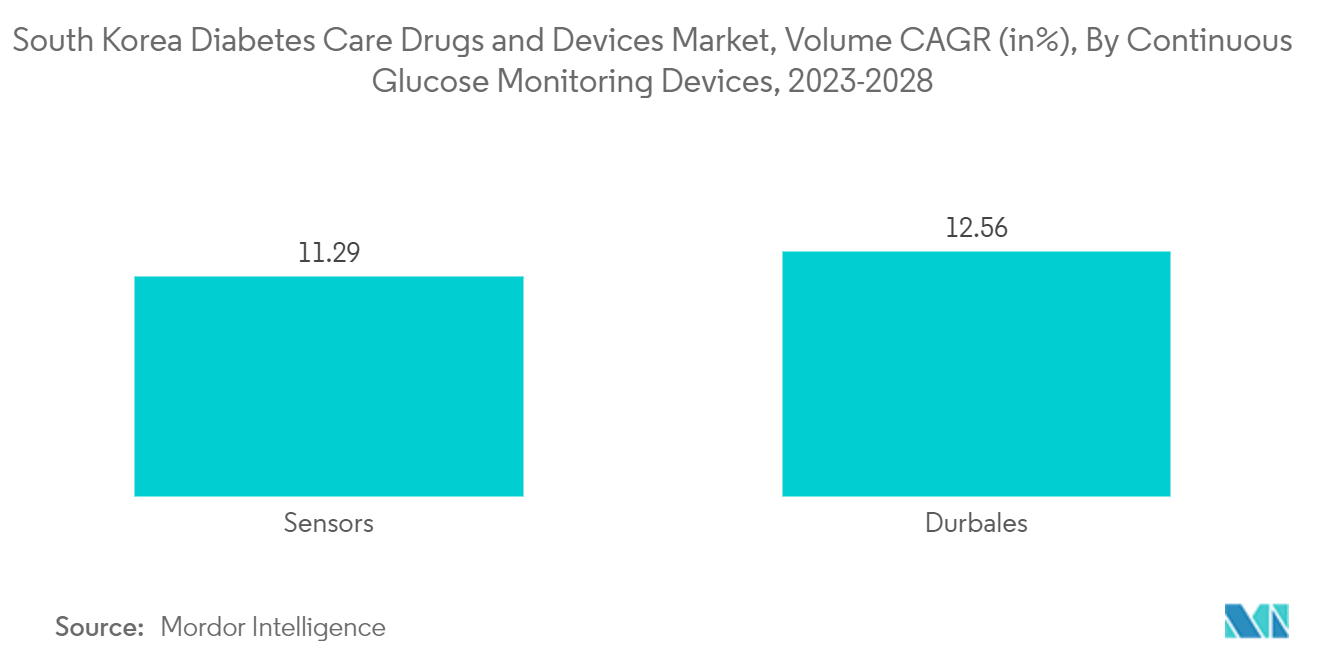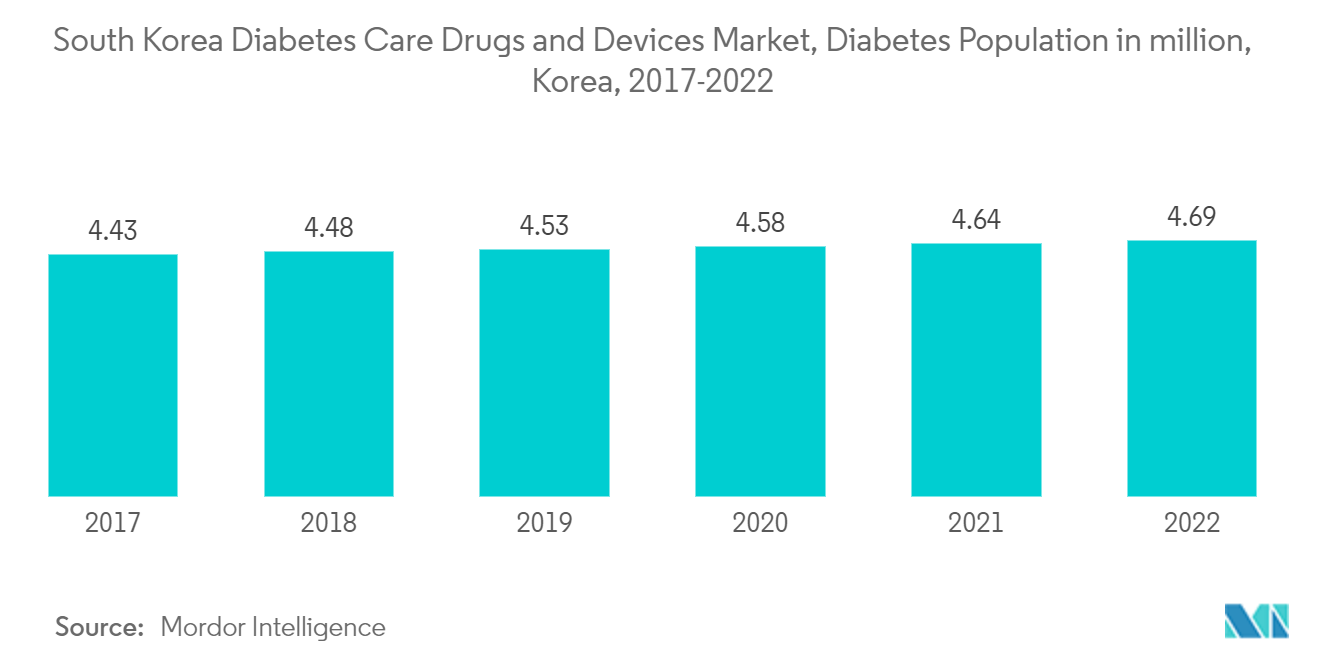Market Trends of South Korea Diabetes Drugs and Devices Industry
The continuous Glucose Monitoring Segment is Expected to Witness the Highest Growth Rate Over the Forecast Period
The continuous blood glucose monitoring segment is projected to grow at a CAGR of around 9.4% during the forecast period.
Continuous blood glucose monitoring is a popular alternative to standard portable finger glucose meters for people with diabetes. Continuous blood glucose monitoring sensors use glucose oxidase to measure blood glucose levels. Glucose oxidase converts glucose to hydrogen peroxidase, which reacts with platinum in the sensor to send an electrical signal to a transmitter. Various promising glucose sensor technologies are being developed, ranging from traditional electrochemical glucose sensors to new optical and other electrical glucose sensors, positively impacting the market growth. The sensor's transmitter sends blood glucose readings to a reader, receiver, or smartphone app. Receivers collect data from transmitters and display the results in various user interfaces. According to the manufacturer, different components of CGM devices have different functions. These devices may need to be applied to the skin and may be visible. Transmitter batteries are available, both disposable and rechargeable. This market segment is driven by the increasing use of CGM devices by diabetics, increasing underlying causes of diabetes, product availability in the market, benefits of these commodities, and Japanese consumption of CGM devices for use. It is expected to grow as people become more aware.
Korea's National Health Insurance is a unified compulsory health insurance system administered by the Korean government that provides medical insurance to almost all Korean citizens. South Korea's NHIS database includes socio-demographic information, access to medical services, medical billing, and health check-ups. Koreans must be registered with NHIS as having type 1 diabetes before claiming insurance reimbursement, whether expendable or CGMS. The patient only needs to confirm this by calling her NHI call center in a day or two, but the patient's doctor can also do this. The Korean required her NHI refund form, prescription, receipt, and statement to request a refund for CGM durables.
Factors such as the increasing prevalence of diabetes and increasing efforts by public and private organizations are expected to propel the market growth in this country during the forecast period.

Rising diabetes prevalence
Diabetes is a major public health problem and one of the astounding challenges facing healthcare systems across South Korea. The prevalence of known type 1 and type 2 diabetes in the Korean adult population is high, and many patients still have not been diagnosed with the disease. Aging and unhealthy lifestyles (people with diabetes have a higher percentage of energy intake from carbohydrates than non-diabetics, whereas people with diabetes have a lower percentage of energy intake from protein and fat) have increased the risk of type 2. The prevalence of diabetes is higher among people with diabetes. It is expected to increase steadily over the next few years. Quality care, including appropriate surveillance, risk factor management, and active self-management, is critical to preventing complications in people with type 2 diabetes.
The frequency of monitoring blood glucose levels depends on the type of diabetes and is different for each patient. People with type 1 diabetes should have their blood sugar checked regularly, monitor their blood sugar levels, and adjust their insulin dosage accordingly. The high prevalence of type 2 diabetes comes with a significant economic burden. The cost of diabetes increases in patients with comorbidities such as hypertension and hyperlipidemia and in those who develop complications.
South Korea's medical device market regulator, the Ministry of Food and Drug Safety, will introduce several amendments to the country's medical device law and expand the list of eligible devices that can be used for electronic labeling. The prevalence of remote patient monitoring devices in the Korean market supports clinical research studies in local clinical research institutions, facilitates monitoring, and expedites discovery.
The increasing diabetes prevalence and the above factors will likely drive segment growth over the forecast period.


